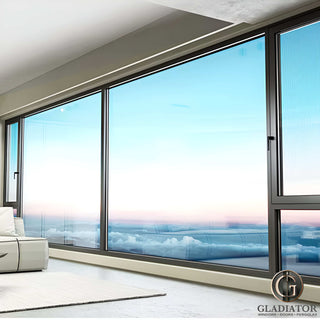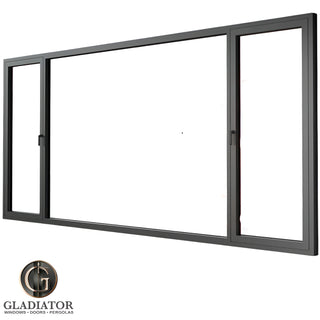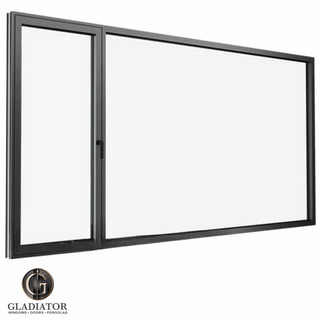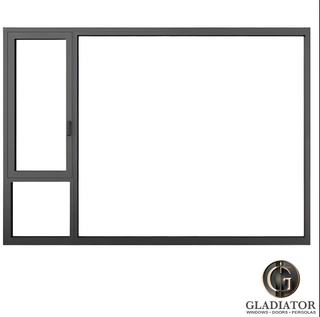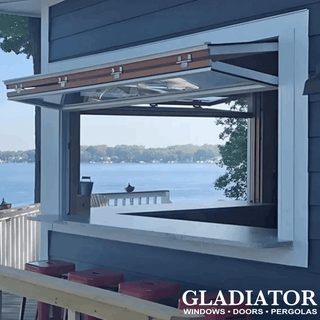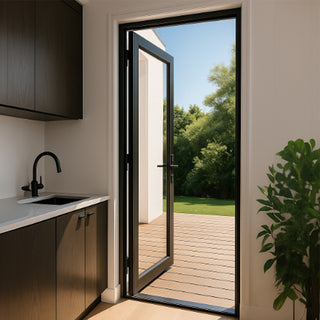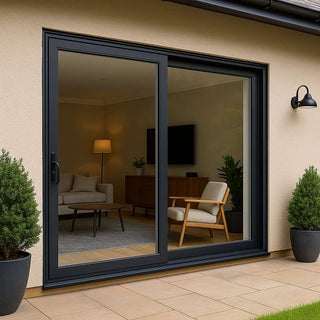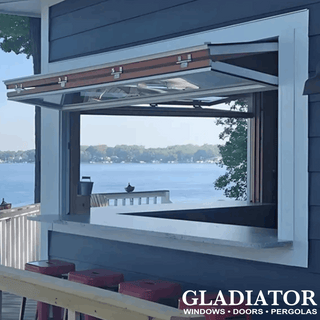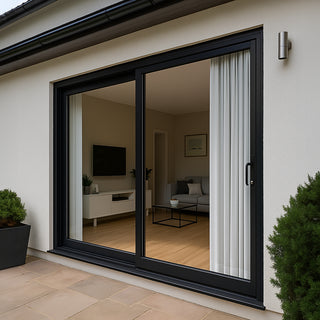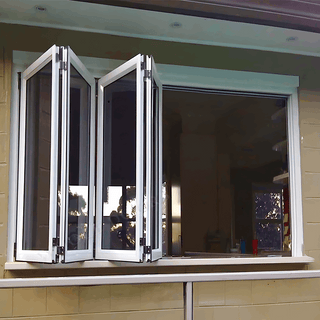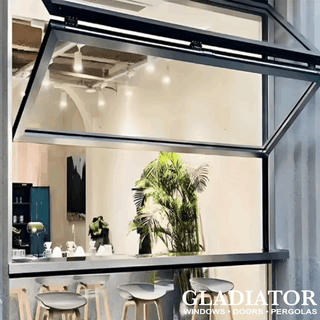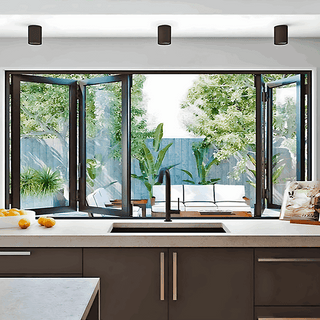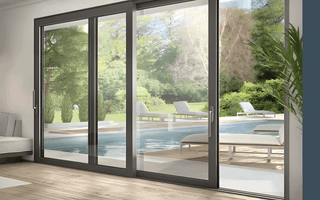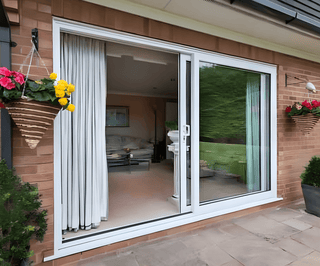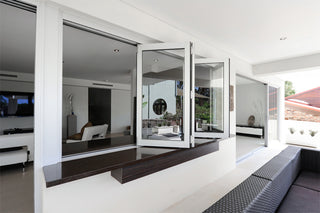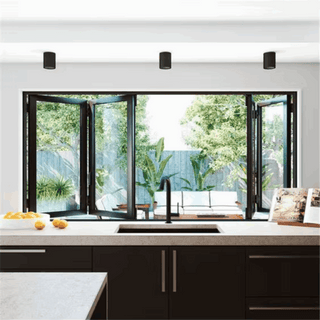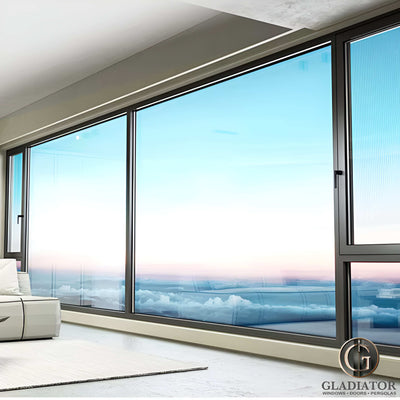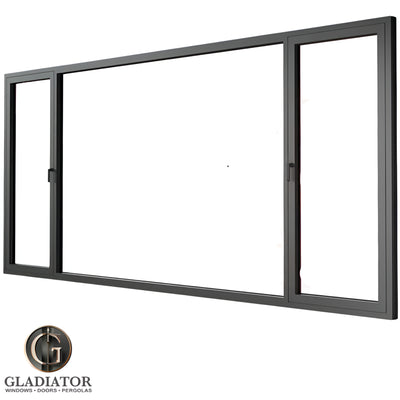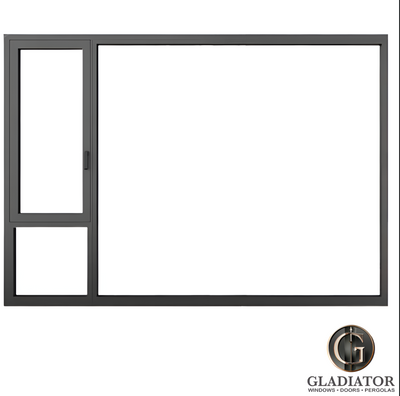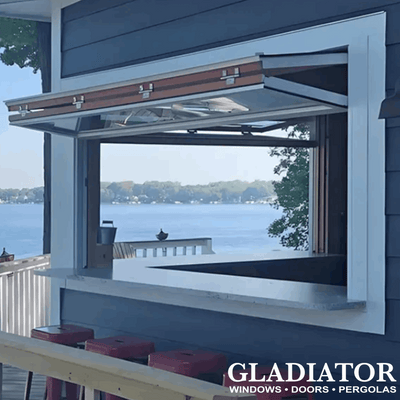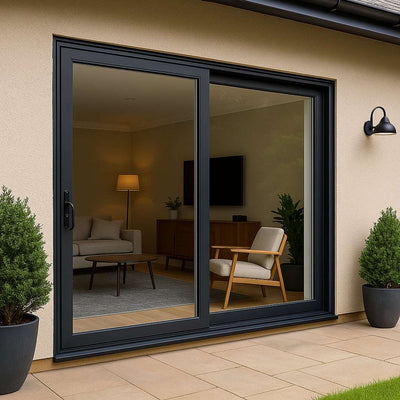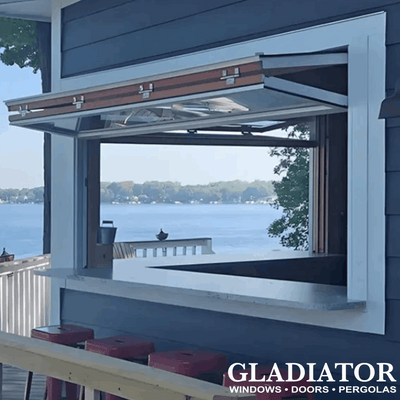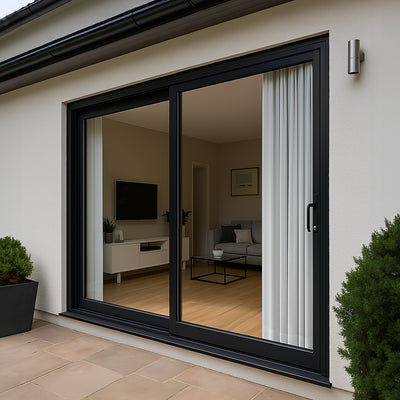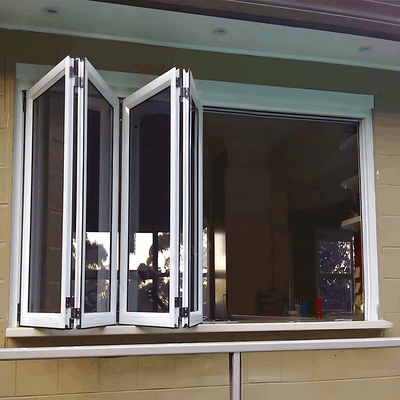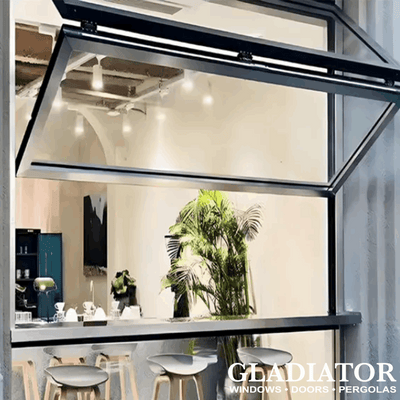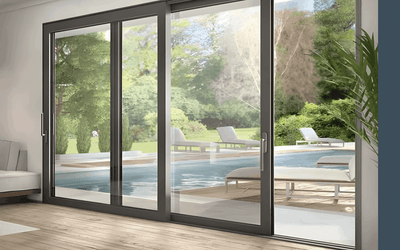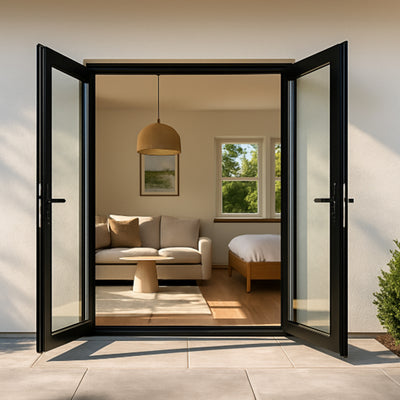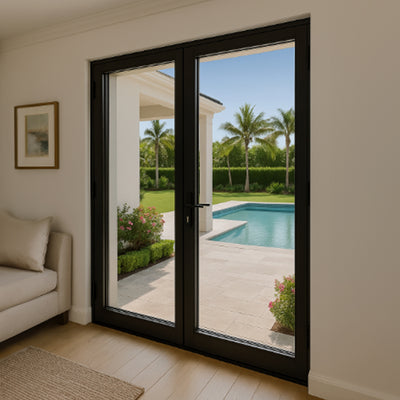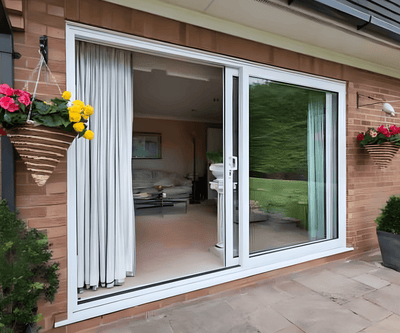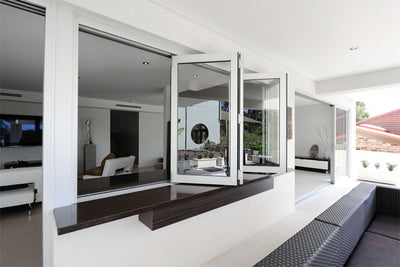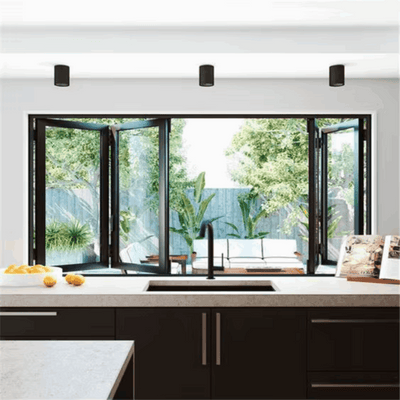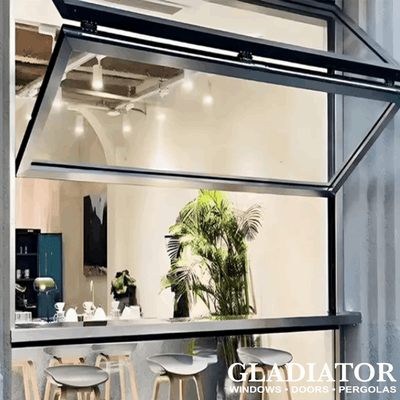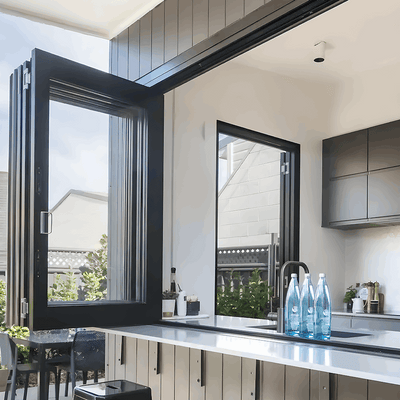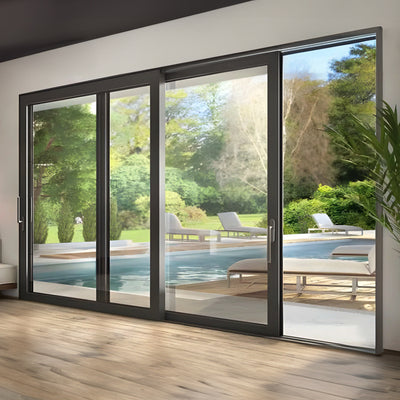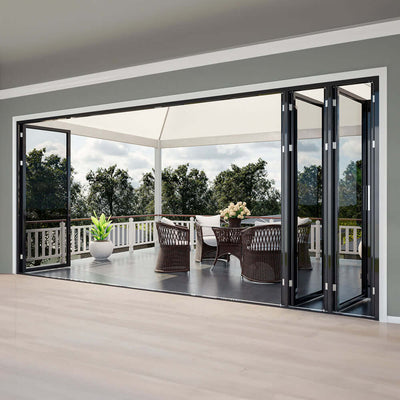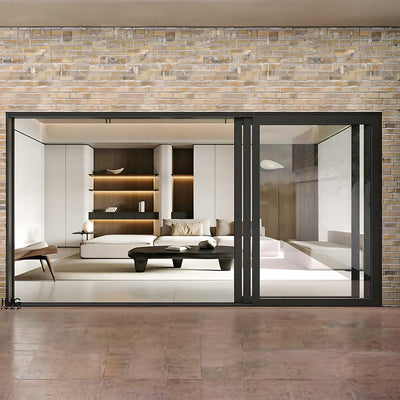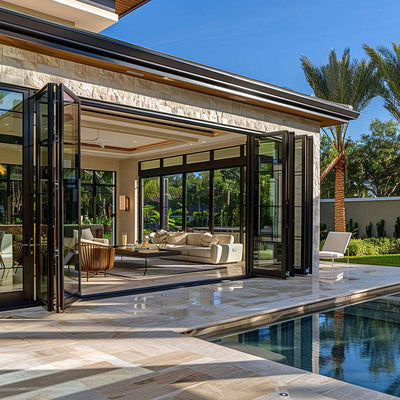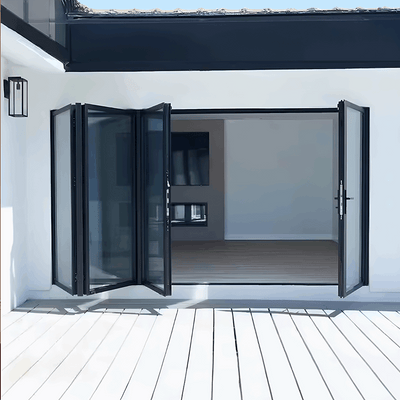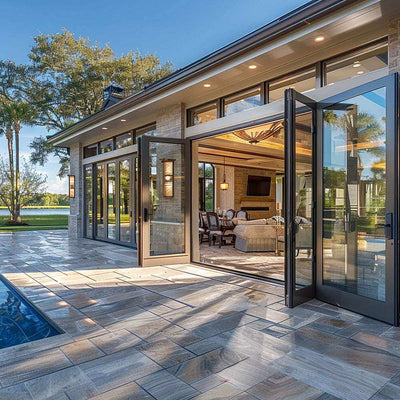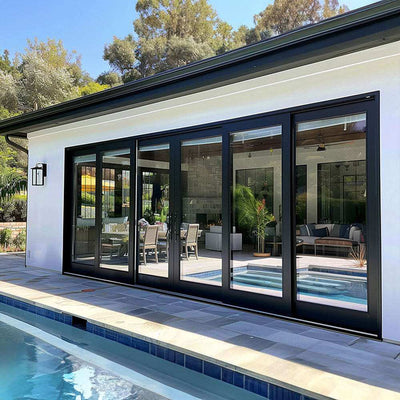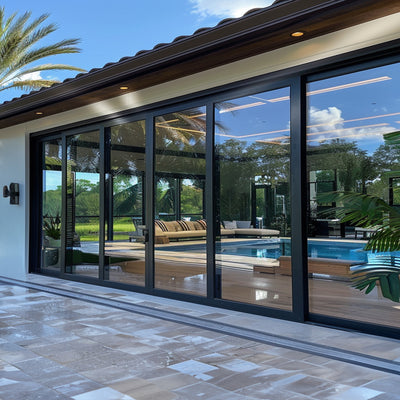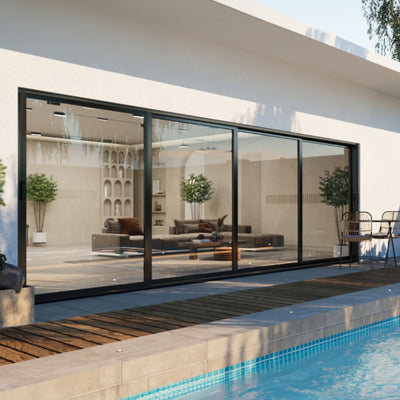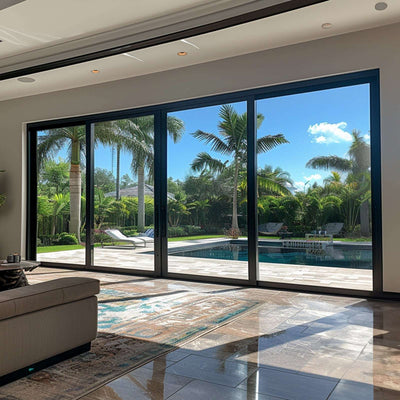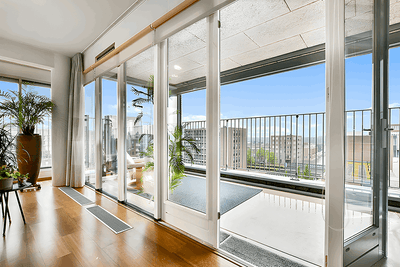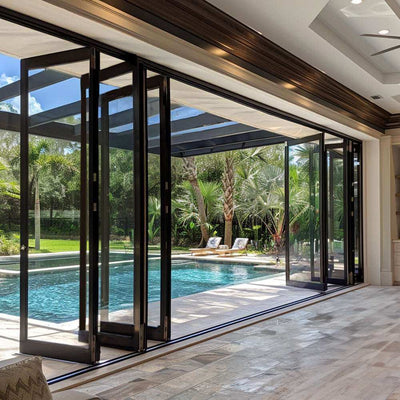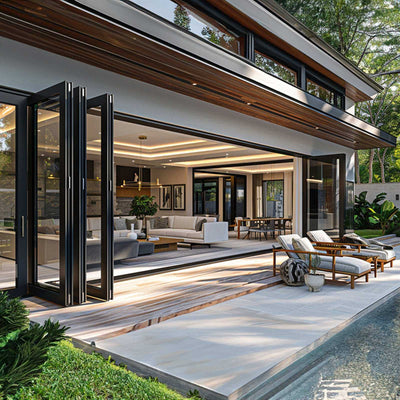Understanding Custom Window Pricing Fundamentals
The allure of custom windows lies in their ability to perfectly match your home's unique style and dimensions. This personalized approach, however, comes at a cost. Understanding the factors that influence custom window pricing is essential for effective budgeting. The infographic below visually represents the average cost difference between standard, semi-custom, and fully custom windows.
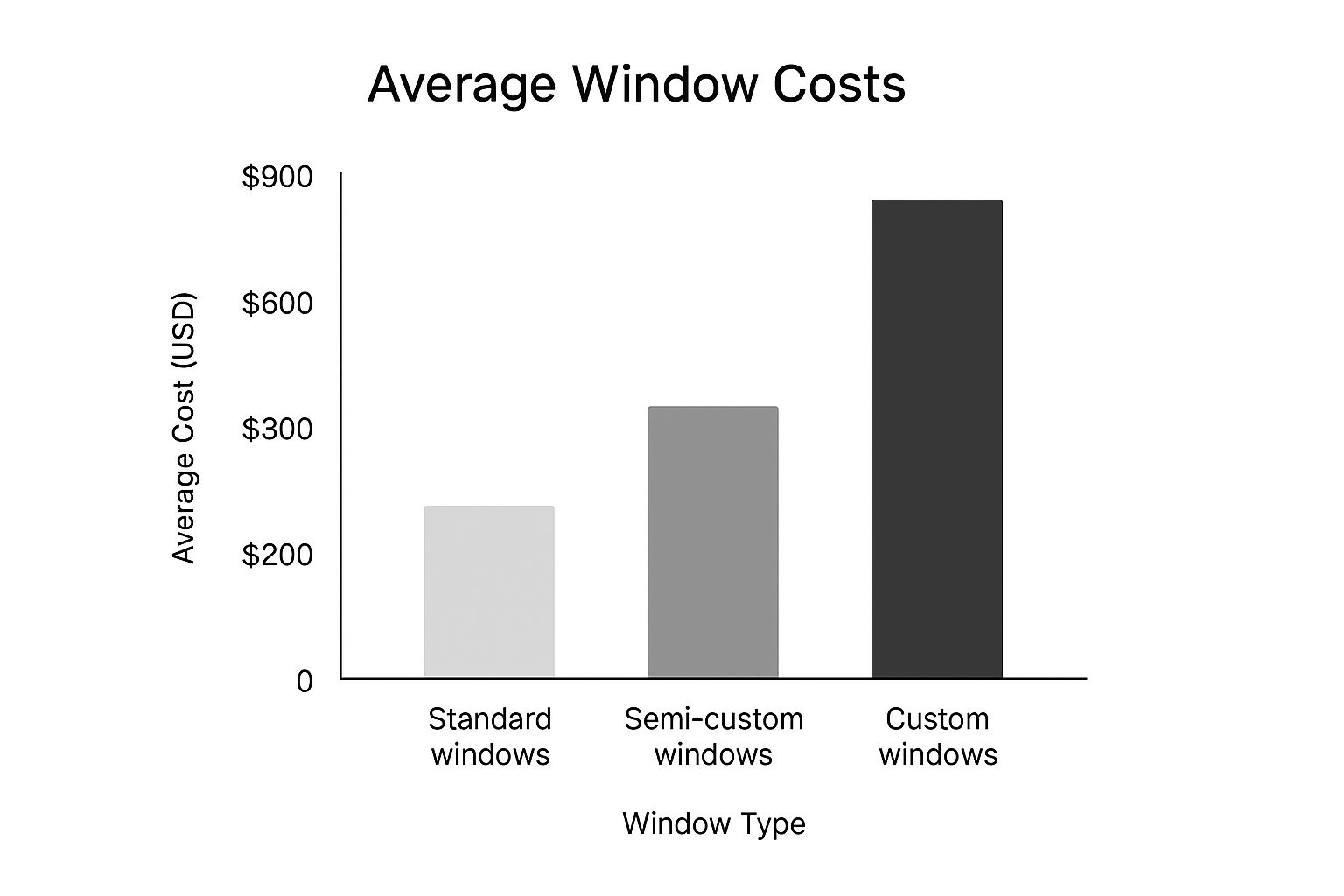
Custom windows are more expensive than standard or semi-custom options, often by a significant amount. This price difference reflects the individualized manufacturing process and specialized materials involved. Standard windows might fit pre-existing dimensions, whereas custom windows are built to your exact specifications. The global window market also plays a role, influencing material costs and overall pricing. Global demand for windows is projected to grow at 2.7% annually through 2028, reaching a market value of $125 billion. Learn more about the global window market For custom windows, the average cost typically falls between $400 and over $1,200, depending on several factors.
Key Factors Influencing Custom Window Costs
Several factors contribute to the final price of custom windows. Understanding these cost drivers allows you to make informed decisions and manage your budget wisely.
-
Material: The material you choose significantly impacts the price. Options like wood, vinyl, aluminum, and fiberglass all have different price points based on their properties and manufacturing processes.
-
Size and Shape: Larger or uniquely shaped windows require more material and specialized manufacturing, directly affecting the final cost. It's similar to the difference between a custom-made suit and one bought off the rack.
-
Features and Hardware: Features like energy-efficient glass, specialized coatings, or decorative hardware add to the overall cost. These upgrades, however, can offer long-term value through energy savings and improved performance. For more on energy savings, check out this guide on how to insulate windows.
-
Installation Complexity: Complicated installations or projects needing structural modifications can increase labor costs. Obtaining detailed quotes that cover all aspects of the project is crucial.
To help illustrate the typical price ranges for different custom window materials, let's take a look at the following table.
Custom Window Price Ranges by Material Type
| Material Type | Low End Price | High End Price | Average Lifespan |
|---|---|---|---|
| Vinyl | $300 | $800 | 20-40 years |
| Wood | $500 | $1,200+ | 30+ years (with proper maintenance) |
| Aluminum | $400 | $900 | 20-50 years |
| Fiberglass | $600 | $1,500+ | 50+ years |
This table provides a general overview of custom window price ranges based on material. Note that these are estimates and actual prices can vary depending on size, features, and installation complexity. While fiberglass offers the longest lifespan, it comes at a premium cost. Vinyl provides a budget-friendly option with a reasonable lifespan, while wood offers a classic aesthetic but requires more maintenance. Aluminum offers a balance of durability and affordability.
By understanding these pricing fundamentals, you can effectively evaluate quotes, prioritize features, and ensure your custom window investment aligns with your aesthetic vision and budget.
Material Costs That Actually Matter For Your Budget
Choosing the right material for your custom windows significantly impacts cost. This goes beyond the initial price and affects long-term expenses like energy efficiency and maintenance. Let's explore how different materials compare.
Vinyl Windows: A Balancing Act
Vinyl windows are popular for their affordability and low maintenance. However, custom vinyl windows are a different story. While standard options are budget-friendly, custom versions can cost 25–60% more. This is due to the specialized manufacturing for unique sizes and shapes.
A standard vinyl window might cost between $250 and $900, while a custom version could range from $600 to $1,500. This difference highlights the premium for personalized designs. More detailed statistics can be found here: Allied Market Research - Vinyl Windows Market
Wood Windows: Timeless Elegance, Higher Costs
Wood windows offer classic aesthetics, but come with higher upfront costs and more maintenance. Their natural beauty often justifies the price premium for a traditional look. However, ongoing maintenance to protect the wood from the elements adds up. This includes regular painting or staining to prevent rot and decay.
Aluminum and Fiberglass: Durability and Efficiency
Aluminum and fiberglass offer greater durability and energy efficiency than vinyl or wood. Aluminum is known for its strength and weather resistance, making it suitable for harsh climates. Fiberglass, though more expensive, provides exceptional insulation and longevity, making it a good choice for energy savings and minimal upkeep. Understanding custom window costs involves different pricing models. Learn more at Schedule Threads - Pricing.
Composite Windows: Combining the Best of Both Worlds
Composite windows combine the benefits of different materials, balancing performance and cost. A composite window might have a wood interior for aesthetics and an aluminum exterior for durability. This offers design flexibility and enhanced performance but usually costs more than single-material options. More information on budgeting smart projects is available here: Gladiator Window and Doors - Window Replacement Cost Calculator: Budget Smart Projects.
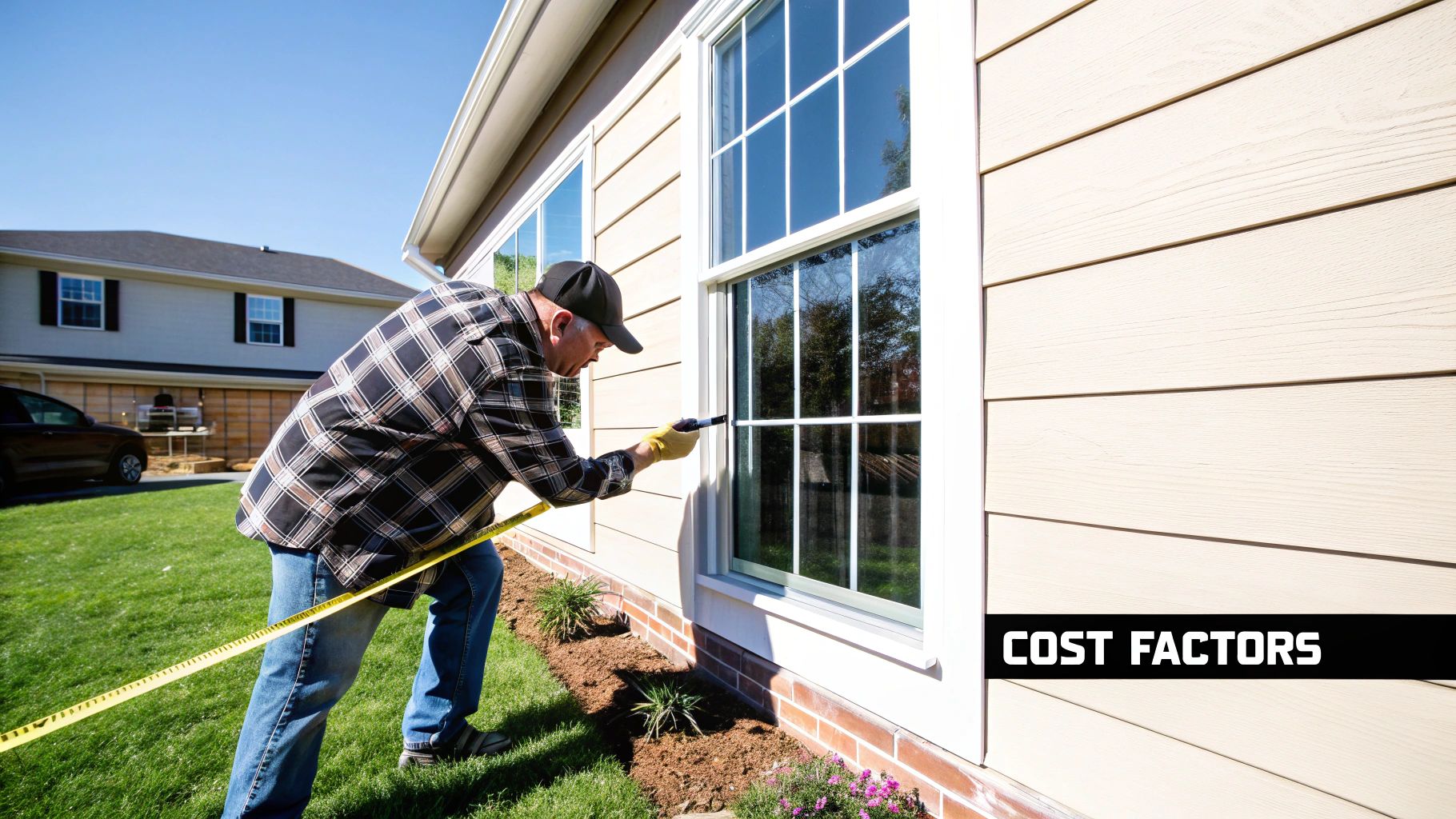
Size, Style, And Features That Drive Up Your Costs
Beyond the window material itself, factors like size, style, and extra features play a significant role in the final cost of your custom windows. Some of these choices have a more noticeable impact on your budget than others. Let's explore how these elements can affect your bottom line.
Window Size: Bigger Isn't Always Better
As you might guess, the size of your windows directly impacts the cost. Larger windows require more materials, which naturally increases manufacturing expenses. Plus, larger panes of glass are more difficult to handle and install, which can bump up labor costs. Imagine ordering a pizza: a larger pizza needs more dough and toppings, making it more expensive. A larger window, similarly, needs more glass and frame material.
Window Style: From Simple to Sophisticated
The way your window operates plays a major role in its cost. Casement windows, which crank outwards, tend to be more complex to manufacture than sliding windows, which move horizontally along a track. This complexity often results in a higher price. Picture windows, fixed in place, are typically the most budget-friendly, while custom shapes and sizes add to the expense.
- Double-hung windows, where both the top and bottom sashes move, are usually mid-range in price due to their moderately complex design.
- Bay and bow windows, known for their elegant curves and added space, are at the higher end of the price range because of their intricate construction.
Premium Features: Balancing Value and Cost
While beneficial, premium features can add to the overall expense of custom windows. Impact-resistant glass, designed to withstand high winds and debris, is a valuable upgrade in hurricane-prone areas, but it comes at a higher price. Likewise, sound-dampening glass, a great option for homes near busy streets or airports, offers more comfort but also increases the cost.
- Decorative glass, like stained or etched glass, adds personality and elegance but represents a more substantial investment.
- Hardware finishes, such as brushed nickel or oil-rubbed bronze, enhance your windows' aesthetic appeal, but these upgrades usually increase the overall price. For more cost-saving tips, see our article on Budget Tips for New Construction Window Cost.

By carefully considering the size, style, and features, you can effectively manage your budget and make informed choices that balance your needs and aesthetic preferences. This involves understanding the value of each upgrade, distinguishing between practical benefits and decorative enhancements, and ultimately controlling your window replacement costs.
Installation Costs And Hidden Expenses To Expect
You've finally picked out the perfect custom windows for your home. That's a big step! But remember, the price tag on the window itself is just one piece of the puzzle. To truly understand the project's total cost, you need to factor in installation.
This can significantly increase the initial window cost, sometimes by 40-60%. This means a $1,000 window could cost you between $1,400 and $1,600 after installation.
Installation Costs: Professional vs. DIY
Professional installation comes with a price, but it ensures proper fitting, maximizes window performance, and often keeps your window warranty intact. The cost depends on several things, like the window's complexity, size, and how easy it is to access. DIY installation might seem attractive for smaller, simpler windows, but it can void warranties and create problems later if not done correctly. Think of it like assembling furniture: a simple chair is easy, but a complex wardrobe requires more expertise.
Hidden Expenses That Can Catch You Off Guard
Beyond the expected installation costs, some hidden expenses can impact your budget. Permit requirements, which change depending on your location, can add unexpected fees. Unforeseen structural problems, such as rot or damage found during installation, might require extra repairs, pushing up the project cost. Even seemingly small things like trim work and disposal fees for the old windows can contribute to the overall expense. For more ways to save, check out our guide on Budget Tips for New Construction Window Cost.
Budgeting and Timelines
When budgeting for custom windows, it's wise to include a contingency fund for unexpected issues. Getting realistic project timelines upfront prevents frustrating delays and potential cost overruns. Understanding fair labor pricing in your area is crucial. This means researching local labor rates and getting several quotes from reputable contractors. By considering these factors, you can accurately estimate the final cost of your custom windows.
Fair Pricing and Transparency
Getting multiple quotes from different installers helps you determine a fair price. Transparency in pricing is essential. A detailed quote should list all costs, including labor, materials, permits, and disposal. Don't hesitate to ask questions about any charges you don't understand. A lower price doesn't always mean a better deal. Focus on value, which includes quality materials, professional installation, and solid warranties. These elements contribute to a successful and cost-effective project.
Regional Price Variations And Market Realities
Custom window costs vary significantly across the country. Your location plays a major role, influencing pricing by 50% or more for the same window. This fluctuation stems from several factors, including local building codes, regional market dynamics, and even seasonal changes. Understanding these regional variations is crucial for accurate budgeting.
Location, Location, Location: Urban vs. Rural
In urban centers with higher labor costs, expect to pay a premium for both materials and installation. This is a simple supply-and-demand issue. High demand combined with a concentrated pool of contractors drives up prices.
Conversely, rural areas might have lower labor costs but limited contractor availability. This can lead to higher prices due to increased travel time or scheduling challenges. For instance, a contractor might charge more in a bustling city like New York than in a less populated rural area. Access to suppliers can also vary regionally, impacting material costs.
Climate Considerations: Coastal vs. Inland
Climate significantly influences material selection and pricing. Coastal regions often require impact-resistant windows to withstand strong winds and storms, increasing project costs. These specialized windows, designed for harsh weather, are typically more expensive than standard options.
Inland areas, on the other hand, might prioritize energy-efficient windows. While these windows may also come at a premium, they offer long-term savings through reduced utility bills. Check out our guide on energy-efficient windows for more information.
Building Codes: Local Regulations and Their Impact
Local building codes impact both material selection and installation complexity. Some areas mandate specific energy-efficiency standards, influencing material choices and potentially increasing costs.
Historic districts often require windows that match the original architectural style. This can necessitate custom-made solutions, which are generally more expensive. These regulations, while important for safety and aesthetic consistency, can significantly impact your budget.
Market Trends and Seasonal Fluctuations
The doors and windows market is projected to reach $219.87 billion by 2025, growing to $291.20 billion by 2030 at a CAGR of 5.78%. Custom windows contribute to this growth. Find more detailed statistics here.
In the UK and Germany, custom casement windows cost between £750-£1,500 and €800-€1,800, respectively, including installation. Seasonal demand also influences pricing. Peak season, typically spring and summer, sees higher demand and potentially higher prices. The off-season might offer better deals as contractors look to fill their schedules.
By understanding these regional factors, you can better anticipate price variations and strategically plan your project. This includes understanding your local market conditions, exploring material options that meet both your needs and local building codes, and considering the timing of your project to potentially capitalize on seasonal savings.
Smart Strategies To Reduce Your Custom Window Costs
Custom windows offer a wealth of benefits, from boosting curb appeal to improving energy efficiency. However, the perceived high cost often discourages homeowners. The good news is, managing custom window costs doesn't have to be a stressful experience. Careful planning and smart decisions can significantly lower expenses without sacrificing quality.
Timing Your Order: Strategic Savings
Timing is key when it comes to saving money on custom windows. Ordering during the off-season (fall or winter) can often unlock substantial discounts. Manufacturers and installers typically experience lower demand during these months and may offer incentives to attract business. This presents a great opportunity to reduce your initial investment.
Bundling and Negotiation: Leverage Your Purchasing Power
Bundling multiple window replacements into one order can also result in significant savings. Similar to buying in bulk, the larger your order, the greater the potential for discounts. Don't hesitate to negotiate with contractors and manufacturers. A little negotiation can go a long way toward lowering your overall project costs.
Working Directly With Manufacturers: Cutting Out the Middleman
Whenever possible, working directly with manufacturers can eliminate retailer markups. This direct approach can lead to substantial cost savings, particularly for larger projects. It also fosters direct communication and potentially faster turnaround times.
Exploring Financing, Rebates, and Tax Incentives: Smart Financial Planning
Various financing options, rebate programs, and tax incentives can help offset the cost of custom windows. Many manufacturers offer financing plans that make custom windows more affordable. Government and utility company rebates for energy-efficient windows can also significantly reduce your overall expenses. Researching these options can reveal valuable ways to save.
Design Modifications for Cost Optimization: Balancing Aesthetics and Budget
Design choices can have a significant impact on cost. Choosing standard shapes and sizes over highly customized designs can lead to substantial savings. This doesn't mean sacrificing style. Simple, elegant designs can be just as visually appealing while keeping costs manageable.
Identifying Reputable Contractors: Avoiding Low-Bid Pitfalls
While tempting, extremely low bids from contractors should be approached with caution. These bids may signal the use of subpar materials or rushed installation, potentially leading to future problems. Choosing a reputable contractor with a proven track record, even if slightly more expensive upfront, can save you money on costly repairs and replacements down the road. You might be interested in: How to Stop Window Condensation: Easy & Proven Tips to protect your investment.
Cost Control During Project Phases: Proactive Management

Proactive cost management throughout your project is essential. This involves setting a realistic budget, diligently tracking expenses, and maintaining clear communication with your contractor about any potential changes or additions.
To help you visualize potential savings, the table below summarizes various cost-saving strategies.
Cost-Saving Strategies and Potential Savings: Overview of different money-saving approaches for custom window projects with estimated savings percentages
| Strategy | Potential Savings | Best Timing | Difficulty Level |
|---|---|---|---|
| Off-Season Ordering | 5-15% | Fall/Winter | Easy |
| Bundling Multiple Windows | 10-20% | Anytime | Easy |
| Direct Manufacturer Purchase | 15-25% | Anytime | Medium |
| Rebates & Tax Incentives | Varies | Varies | Medium |
| Simplified Design Choices | 10-30% | Planning Phase | Easy |
| Careful Contractor Selection | Varies | Before Project | Medium |
By implementing these strategies, you can significantly reduce the cost of your custom windows while maintaining quality and long-term value. This allows you to enjoy the beauty and benefits of custom windows without exceeding your budget.
Making Your Custom Window Investment Decision
Understanding the cost of custom windows is important, but the true key lies in making smart choices that balance cost with value over time. This means carefully reviewing contractor quotes, asking pertinent questions, and spotting potential issues before they become expensive mistakes.
Evaluating Contractor Quotes: Beyond the Bottom Line
When comparing quotes, don't just focus on the lowest number. A thorough quote should list every cost, including:
- Materials: The specific window type, brand, and features should be clearly outlined.
- Labor: Installation costs, including any needed structural changes or trim work.
- Permits: Fees for required building permits.
- Disposal: Costs for removing and disposing of your old windows.
- Warranty: Details of the warranty covering both the windows and the installation itself.
This detailed breakdown lets you accurately compare contractors. A lower quote might, for example, include lower-quality materials or a shorter warranty.
Essential Questions to Ask Your Contractor
Asking the right questions can reveal a contractor's experience, reliability, and commitment to quality work. Here are some key questions to consider:
- Experience: How long have you been installing custom windows? Do you have experience with projects like mine?
- References: Can you provide references from past clients?
- Insurance and Licensing: Are you fully insured and licensed?
- Project Timeline: What's the estimated project timeline? What if there are delays?
- Communication: How will we communicate during the project?
- Payment Schedule: What is the payment schedule?
These questions help you assess professionalism and build confidence in their ability to deliver a successful outcome. Clear communication is essential for managing expectations and dealing with any surprises.
Red Flags to Watch Out For
Be cautious of contractors who:
- Pressure you to decide quickly.
- Give unusually low bids.
- Lack proper licensing and insurance.
- Offer vague or incomplete quotes.
- Avoid giving you straight answers.
These can signal potential problems, from poor work to scams. Planning a budget is important for controlling costs. You can find general budgeting advice here: Budget Friendly Funeral Planning
Assessing the Total Value Proposition
While cost is a main concern, think about the long-term value. Energy efficiency from new windows can lower utility bills. Increased home value is another plus. Improved comfort from fewer drafts and less noise adds to your quality of life. These factors, not immediately obvious in the price, contribute to the overall value. View new windows as an investment in your home's future, not just an expense.
By balancing the upfront cost against these long-term advantages, you can make a wise investment. This means understanding your needs, having realistic expectations, and picking a reliable contractor who can deliver quality and value.
Ready to update your home? Visit Gladiator Window and Doors to see our selection of high-quality, custom-made windows and doors at the lowest prices in the USA. Get a free quote today and find the perfect windows to improve your home's beauty, efficiency, and value.

















